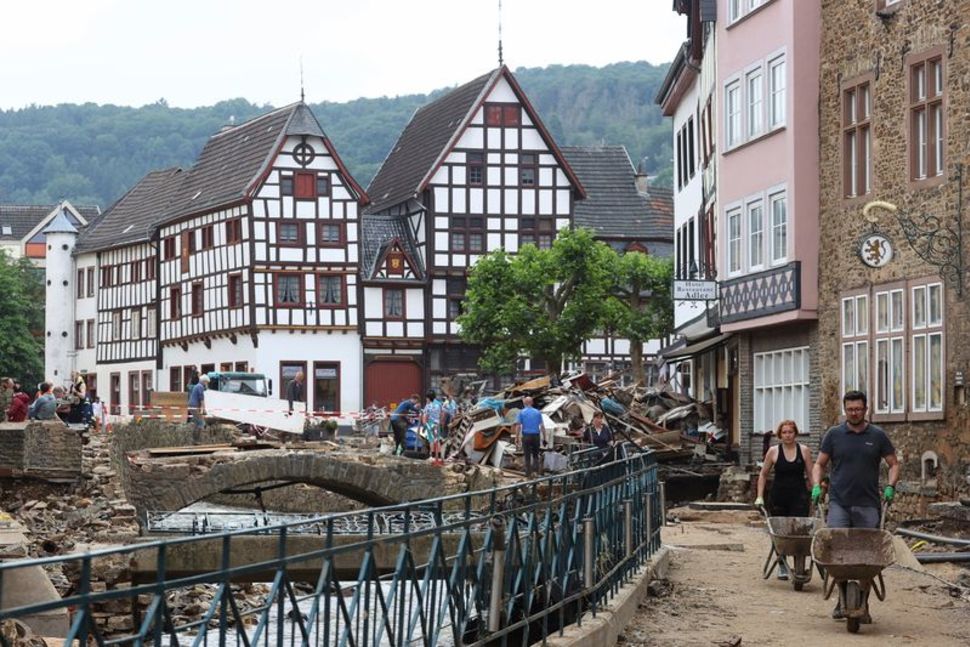Floods lay bare Europe's "gigantic task" in averting future climate damage
The catastrophic floods that swept northwest Europe last week were a stark warning that stronger dams, dykes and drainage systems are as urgent as long-term climate change prevention, as once-rare weather events become more common.

Brussels: The catastrophic floods that swept northwest Europe last week were a stark warning that stronger dams, dykes and drainage systems are as urgent as long-term climate change prevention, as once-rare weather events become more common.
As the waters recede, officials are assessing the destruction left by the torrents that terrorised swathes of western and southern Germany, Belgium and the Netherlands, smashing buildings and bridges and killing more than 150 people.
German Interior Minister Horst Seehofer, who visited the spa town of Bad Neuenahr-Ahrweiler on Monday, said the cost of reconstruction would run into the billions of euros, in addition to the millions needed for emergency assistance.
But the cost of designing and building better infrastructure to mitigate such events could be many times higher.
Coming hard on the heels of severe heatwaves and wildfires in North America and Siberia, the floods have put climate change at the top of the political agenda.
The European Union this month launched an ambitious package of measures to address climate change at source, focusing on reducing greenhouse gas emissions to limit the relentless rise in the global temperature.
It is also implementing a 750 billion euro coronavirus recovery package that is heavily weighted towards projects that boost economic resilience and sustainability.
But the devastation wrought by last week's floods has made clear that the extreme weather events predicted by climate change scientists are already happening now, and require a direct response.
"We need to build new infrastructure - containment basins, dykes, riverside overflow drainage areas - and strengthen sewerage systems, dams and barriers," said Lamia Messari-Becker, Professor of Building Technology and Construction Physics at the University of Siegen.
"It is a gigantic task. This is the hour of the engineers."(Reuters)
 Dynamite News
Dynamite News